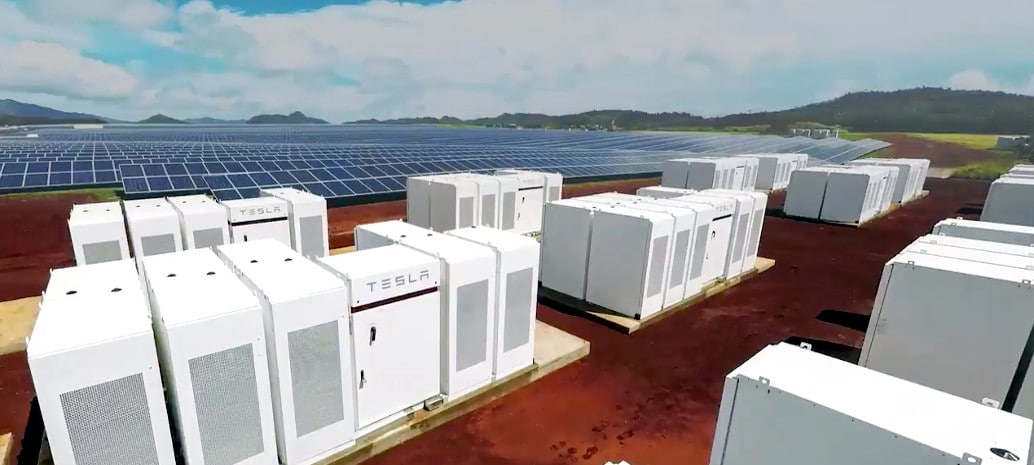Today Tesla will officially put online its solar-PV-plus-storage project on the island of Kaua’i, at the end of Hawaii’s chain of islands. The 13 MW solar and 52 MWh battery storage project will supply electricity under a 20-year contract with the island’s public utility.
Unique among utility-scale PV systems, Tesla’s project will be used to meet peak demand between 5 PM and 10 PM – after the sun goes down. This will be accomplished through the use of the battery system, which is comprised of 272 Tesla Powerpack batteries using lithium-ion technology developed by Panasonic in collaboration with Tesla.
It will also help to boost the penetration of renewable energy on Kaua’i, which was meeting around 17.5% of its annual demand with solar PV in 2015. This is expected to rise to 25% of annual demand by the end of this year, with a major portion of that being the Tesla PV and battery system.
This is far more than any nation known to pv magazine, but is part of a leap forward in renewable energy penetrations in isolated regions, where solar – and in this case batteries – are replacing high-cost fossil fuels.
In January, the magazine reported that Honduras met over 10% of electric demand with solar PV in 2016, as the highest portion of any non-island nation on earth, and well above the levels in Italy or Germany, the previous leaders.
This move to high levels of solar is particularly remarkable on Kaua’i, which faces a number of challenges to integrating high levels of renewable energy. These include demand that peaks after sunset, the island’s small area, a lack of interconnection to other islands, and a prohibition on wind power, which could otherwise balance the daily production cycle of solar.
In December 2015, pv magazine spoke with Kaua’i Island Utility Cooperative (KIUC) about the challenges, and spokesperson Jim Kelley noted that due to the island’s heavy dependence upon oil, there was a high motivation to deploy renewables.
“We have small, fast-start generators that are not prone to cycling damage, and we have, really, a small group of engineers who have a lot of grid operations experience who really are being driven to push the envelope, because outside of solar, there are really few alternatives to us for the high price of oil generation,” Kelley told pv magazine. “We had to make this work.”
Tesla estimates that its installation will save Kaua’i 1.6 million gallons of oil annually, which it used in electricity generation. Tesla has also provided the solar plus storage system at a cost of $0.145 per kilowatt-hour, a price that redefined the idea of how inexpensive storage could get when it was signed a year and a half ago.
Like the rest of Hawaii, Kaua’i has a mandate to reach 100% renewable energy by 2045. This will be more challenging for Kaua’i than the rest of the state, but the island has a head start.
This content is protected by copyright and may not be reused. If you want to cooperate with us and would like to reuse some of our content, please contact: editors@pv-magazine.com.









By submitting this form you agree to pv magazine using your data for the purposes of publishing your comment.
Your personal data will only be disclosed or otherwise transmitted to third parties for the purposes of spam filtering or if this is necessary for technical maintenance of the website. Any other transfer to third parties will not take place unless this is justified on the basis of applicable data protection regulations or if pv magazine is legally obliged to do so.
You may revoke this consent at any time with effect for the future, in which case your personal data will be deleted immediately. Otherwise, your data will be deleted if pv magazine has processed your request or the purpose of data storage is fulfilled.
Further information on data privacy can be found in our Data Protection Policy.